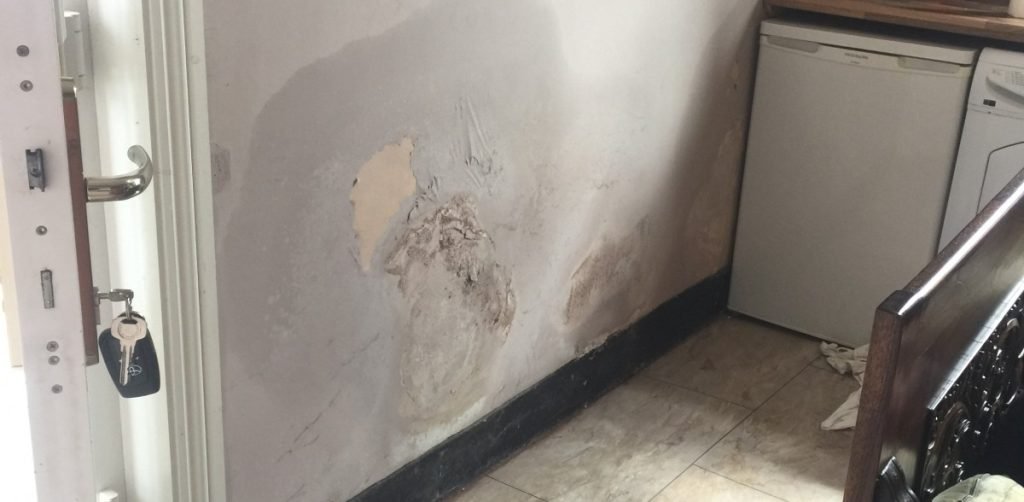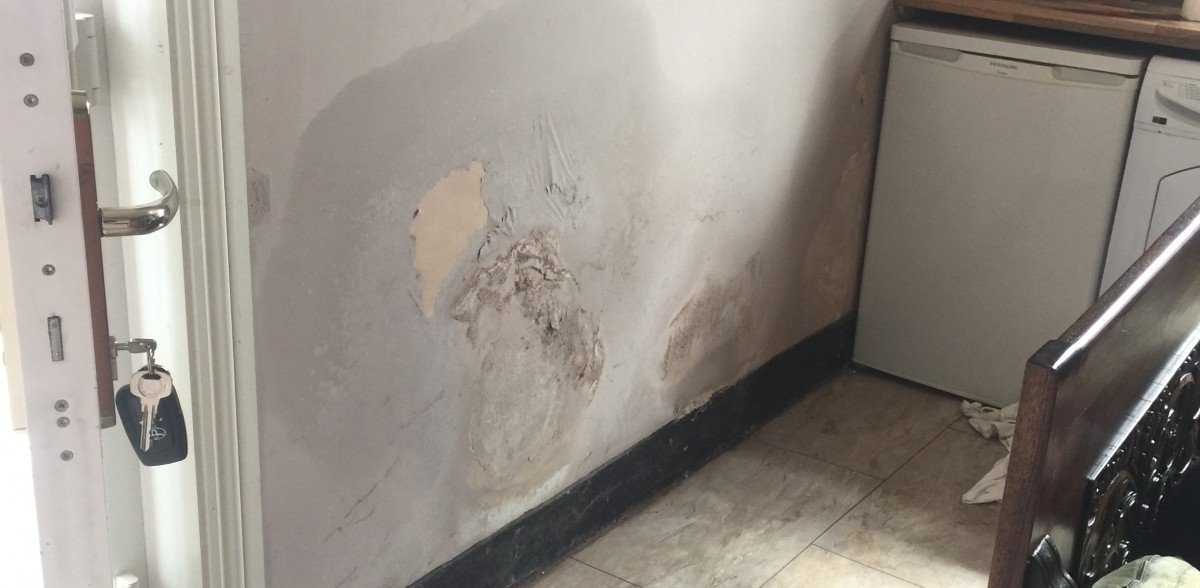
When you face wet patches on your wall, the real question is: what methods help you distinguish between rising damp and a leaking water pipe in your wall? Understanding the main signs, moisture patterns, and using leak detection tools like thermal imaging cameras or moisture meters are key to spotting the difference.Rising damp spreads from the ground up and usually features tide marks or salt stains, while a leaking pipe often creates random wet spots, mold patches, or crumbling plaster. Tracking the source with specialized equipment reveals if you’re dealing with water ingress from below or a hidden plumbing issue.In real Dutch homes, knowing whether mineral deposits point to capillary action or if sudden staining reveals a burst pipe can save you big time. Recognizing these signs early protects your property and helps you find the right fix—fast.
Understanding the causes: Rising damp vs leaking water pipe
Distinguishing between rising damp and a leaking water pipe in your wall is crucial. Each issue requires a different remedy, and misdiagnosis can lead to persistent problems, unnecessary expenses, and ongoing structural or health risks. Rising damp and water leaks often appear similar—think peeling paint, discolouration, or a musty smell—but their origins and solutions differ. Our team at Ultrices Lekdetectie, using advanced methodologies and years of field expertise, helps you make the right identification every step of the way.
Definition and mechanisms of rising damp and water leaks
You should first get a grip on exactly what you might be dealing with.
- Rising damp: This process describes moisture from the ground moving upwards through porous building materials like bricks or stone due to capillary action. Often, it stops at about 1.2 meters, evidenced by distinct tide marks and salt deposits.
- Leaking water pipe: An internal water leak involves pressurized plumbing, heating, or rainwater pipes breaching somewhere in the wall. This release is often continuous and can quickly escalate if left untreated.
Building physics specialists such as Dr. Tim Padfield (well-known for his work on building moisture) and organizations like TNO (Netherlands Organization for Applied Scientific Research) emphasize the importance of capillarity and hydrostatic pressure when evaluating building moisture origins.
Recognizing the signs: Key differences
You can often gather initial clues just by observing. Recognizing the distinct signatures between rising damp and leaking pipes is a practical step before deploying technology.
- Tide marks (Pleisterbanen): Rising damp typically produces horizontal stains with a clear upper border, plus “salting” (white powdery residue) from mineral deposits.
- Localized patches: Leaks usually present as irregular, often spreading stains that grow and shrink—sometimes depending on water use or rainfall.
- Moisture height: Dampness from the ground rarely rises above 1.2 meters, while leaks can occur at any height or suddenly appear higher up.
- Odour and texture: Leaks tend to feel wet and sometimes warm (hot-water pipes), while rising damp brings a consistent cool, clammy feel.
Observational skills, a moisture meter, and basic knowledge get you far, but specialist assessment brings certainty.
Scientific processes and professional leak detection technology
In the field, we complement observation with a range of advanced tools, using scientific protocols that ensure accurate results:
- Moisture mapping (Protimeter, Trotec): Professional moisture meters reveal the distribution and depth of moisture within a wall.
- Infrared thermography (FLIR): Thermal cameras detect subtle temperature variations in walls, revealing the heat signature of warm or cold water leaks.
- Salt analysis: Field kits and specialized meters test for nitrates and chlorides, indicating ground moisture (rising damp) versus tap water (leaks are generally salt-free).
- Acoustic listening devices: These amplify the sound of a pressurized leak, pinpointing its location without invasive work.
- Endoscopy (Invasive camera inspection): Mini cameras investigate wall cavities or pipe chases for physical signs of water loss.
We at Ultrices Lekdetectie follow best practices published by experts like Dr. C. Hall and organizations such as the Building Research Establishment (BRE), tailoring our approach to your specific type of construction, whether it’s a modern cavity wall or a heritage brick facade.
Step-by-step process: Distinguishing damp sources in practice
Different types of properties, materials, and pipe materials (like copper, lead, plastic, or cast iron) require a systematic approach—the best way to ensure no stone goes unturned:
- Visual assessment: Look for consistent damp patterns, tide marks, bubbling paint, crumbling plaster, and salt efflorescence.
- Moisture content measurement: Use calibrated electronic moisture meters at multiple heights and locations along the suspect wall.
- Pipe tracking (Tracer gas or ultrasonic): Deploy non-destructive methods to identify pressurized water lines and check for drops in pressure (Water Pressure Drop Testing).
- Localizing the source: Utilize colored dyes or fluorescents, if necessary, to follow water movement from suspected pipe routes.
- Data cross-referencing: Compare results with local weather data, plumbing blueprints, and historic property records.
These steps are based on scientific consensus and real-life experience, following guidance from institutions like the Royal Institute of British Architects (RIBA).
Related factors and real-world examples
In Dutch and Belgian buildings, specific construction methods or maintenance issues can tip the balance:
- Brick versus concrete: Solid brick walls are more prone to rising damp, while cavity wall insulation can conceal leaks for longer.
- Neighbour influence: Shared walls (tussenmuren) in row houses may transfer leak effects horizontally.
- Historical properties: Older lime mortars wick water differently than modern cements, and failed damp proof courses (DPC) are common.
- Plumbing updates: Renovations with plastic pipes often reveal new vulnerabilities, especially with push-fit systems.
Client stories frequently show how a simple misdiagnosis—treating a rising damp problem with anti-mould paint or ignoring a minor leak—can turn into major headaches and expense.
Benefits of professional leak detection and no cure no pay service
Trying DIY fixes or guessing frequently leads to ongoing costs, health hazards (think mould, as highlighted by the World Health Organization), and lower property value. Here’s why you win by bringing in professionals like Ultrices Lekdetectie:
- You get pinpoint certainty with non-destructive methods—no unnecessary wall breaking or missteps.
- Our expertise covers every major leak detection technology—moisture meters, endoscopy, thermal imaging, and more.
- Clear reporting: Receive a detailed expertiseverslag with clear proof, helping smooth dealings with insurance, landlords, or building managers.
- Peace of mind with transparent fixed pricing—no cure no pay means zero risk for you.
- We work across the whole of Belgium and the Netherlands, responding fast so your building and health stay protected.
Take action: Stop guessing and start solving
Making the right distinction between rising damp and a leaking water pipe in your wall is never just academic—it’s your direct route to lasting repair, lower costs, and a safe, dry home. Let our VCA gecertificeerd team at Ultrices Lekdetectie deliver certainty and results. If you want more in-depth technical insight about our high-standard leak detection and moisture investigation without causing any destruction to your property, lekkage oorzaak opsporen zonder breekwerk.Ready for a thorough investigation and expertiseverslag within just 3 working days? For just €395, with our no cure no pay guarantee, we solve your leakage concern anywhere in Belgium. Discover how easy professional leak detection can be—vaste prijs lekdetectie met expertiseverslag. Get rid of uncertainty for good and let Ultrices Lekdetectie provide the targeted solution you deserve.
FAQ
1. How can you visually tell the difference between rising damp and a leaking pipe in your wall?
You start with the basics: look closely! Rising damp generally starts from the ground and creeps upwards, forming a “tide mark” along the wall. It’s a slow, steady progression. On the other hand, a leaking pipe can cause isolated, irregular patches higher on your wall or even near the ceiling. At Ultrices Lekdetectie, we often see rising damp in older homes with old brickwork, while pipe leaks cause sudden, mysterious wet spots anywhere in the wall.
2. What tools help you identify the source of moisture?
Rising damp and pipe leaks need different detective gear. Moisture meters measure damp levels at various heights—rising damp usually shows a gradual decrease the higher you go. Thermal imaging cameras spot “cold” areas where water is escaping from pipes. At Ultrices Lekdetectie, we also use acoustic sensors for that telltale drip hidden in the wall.
3. Are musty smells different between rising damp and pipe leaks?
Absolutely! Rising damp has a persistent, earthy smell because groundwater seeps through masonry, bringing in soil minerals. A pipe leak, especially from a clean water supply, may offer little to no scent—or, in the case of drain pipes, an unpleasant, sharp odor. Trust your nose!
4. Can paint or plaster tell you what’s going on?
Yes! Paint that bubbles or chips off in vertical streaks from the floor up usually points to rising damp. A leaking pipe often leaves circular stains, peeling, or bubbling in more random spots. At Ultrices Lekdetectie, we see that knowing the pattern can save you lots of repair time and costs.
5. Should you fix both issues the same way?
No way—different beasts, different solutions! Rising damp calls for improved damp-proofing and sometimes excavation. Pipe leaks demand precision repairs—locating and fixing the exact spot without unnecessary demolition. That’s why proper detection, like ours at Ultrices Lekdetectie, is key before starting any fix.
